
Ah, it’s that time of the year again. As the seasons turn the Fall crop of anime is upon us, and to label its premieres as promising would be an understatement. For those who are unfamiliar with how anime seasons work, shows are divided into 10-13 episode seasons/cours, which align with the actual seasons. Some shows run for continuous seasons, (roughly 12 episodes makes up a cour), but almost all modern shows abide by this pattern. The vast majority of this output is available simultaneous to its Japanese release via streaming services such as Crunchyroll, Funimation, Hulu, HiDive, and others.
And as it turns out, the most recent wave of titles is an incredibly broad and deep one, full of sequels, hotly anticipated new releases from reliable studios, and breakout surprises. Lets run down some of my personal favorite premieres.
Karakuri Circus

Out of all of this season’s impressive debuts Karakuri Circus sits alone at the top, combining impressive animation, excellent compositions, strong scene to scene pacing, and a promising core cast. Based on a manga by Kazuhiro Fujita, the author of Ushio and Tora, this three cour anime aims to somehow adapt 43 volumes (for context the manga was written over the course of nine years). While that would normally be cause for concern, Fujita is helping with series composition, meaning he will be overseeing the overall script and hopefully will be able to pull out the essential elements of his original story to create something new. Karakuri Circus follows Masaru Saiga, a young boy who is left an orphan after his billionaire father dies in a freak accident. While being pursued by mysterious assailants, an onlooker named Narumi Kato intervenes, shepherding him to his future bodyguard. Her name is Shirogane Saiga and she is the wielder of Arlequin, a puppet that she commands as a deadly weapon.
Studo VOLN cut its teeth adapting Ushio and Tora, and their expertise in recreating the 90’s aesthetic of the original manga is readily apparent. The cross hatching, old-school character designs, and general feel of the animation play like an homage to the pre-digital days of anime production, exhibiting a fairly peerless air of polish and style. Additionally, the plot and its characters are quite intriguing so far, with the trio each feeling like fully formed characters already. From Masaru’s intense guilt in getting the others involved, to Narumi’s heroic inclinations that seem to come about naturally, to Shirogane’s intimidating skills contrasted with her warmth towards Masaru, each cast member already has an interesting dynamic. While I’m still worried that cutting a massive manga down to size could lead to some unpleasant plot-scrunching, everything about the first episode of Karakuri’s Circus points to a confident adaptation.
Rating: A
SSSS.Gridman
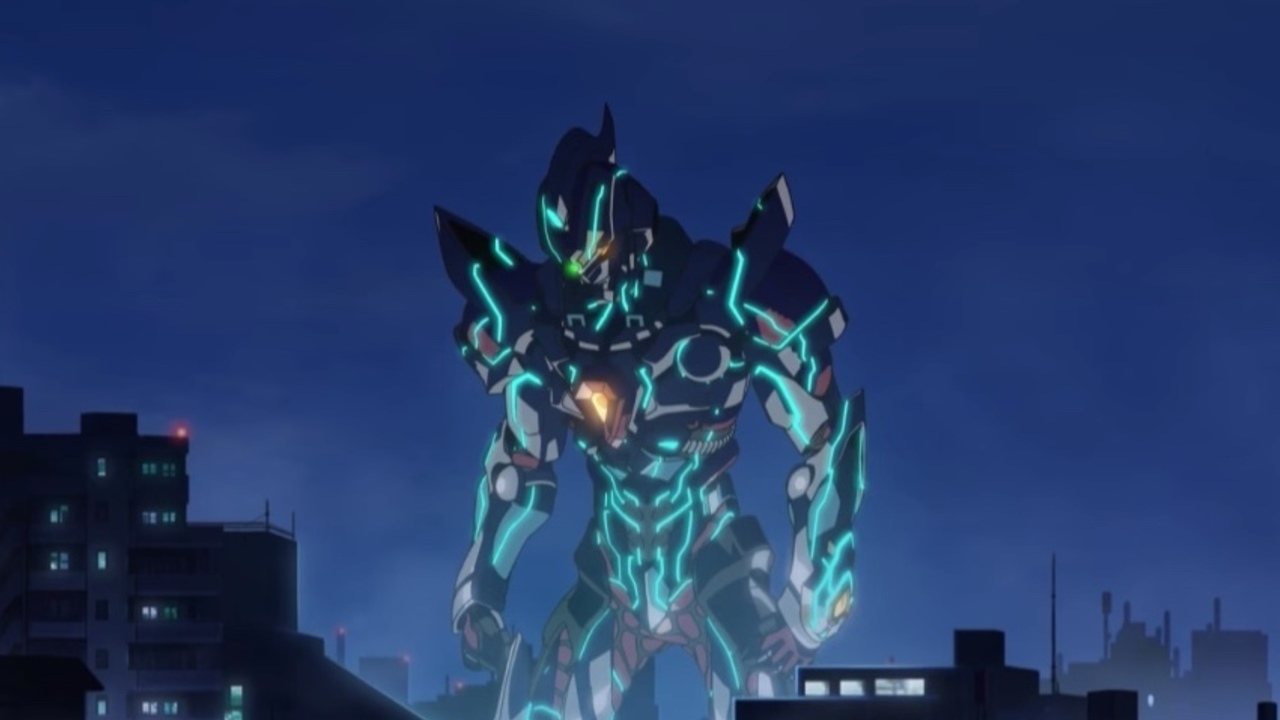
While you would think that getting burned so recently by a Trigger mecha show (Darling in the Franxx…) would dissuade me from once again getting invested in another mecha show from the same studio, the premiere of SSSS.Gridman made too strong of an impression to ignore. Weirdly enough, the concept of an amnesiac boy connecting with some mysterious entity to pilot a giant robot against Kaiju is kind of well worn territory for an anime series. But where this premise could very easily have led to a textbook genre entry, Trigger infuses their well known sense of personality into this world, particularly through its characters. Their designs are distinctive with appealing color palates that match their underlying personalities, personalities that are marked with an impressive specificity considering their limited screen time. Rika’s cautiousness at getting sucked into this bizarre world, Sho’s pointed responses and enthusiasm, Akane’s immediately charming persona that seems to be masking something, along with the short sequences that depict different friend groups casually hanging out in a grounded fashion, combine to make for interesting classroom scenes that build towards the action. This aspect remind me quite a bit of the easygoing charm of the character dynamics found in FLCL, a show that some of the staff had a hand in.
But beyond just its relationships, Gridman also shares FLCL’s understated representation of the surreal. The protagonist sees a looming kaiju buried in fog, a magical old computer sucks the main character into a robot suit, and a giant monster fight occurs with the cast mostly just accepting these incredible events with minimal questioning. I don’t doubt that some will find this strange tonally, but the numerous fantastical touches made me far more curious to understand the nature of the this world. While the massive destruction of the kaiju battle partially felt at odds with the somewhat light-hearted nature of the rest of the production, a moment at the end seems to address this concern directly. Through its confident portrayal of its cast and a surprisingly well animated CGI brawl, SSSS.Gridman makes a convincing argument that Trigger has still got it.
Rating: B+
Run With the Wind

Speaking of charming character interactions, the premiere for Studio IG’s Run with the Wind has the makings of a Linklater-esque hang out movie, but with the additional plot inertia of its premise. The plot follows Kakeru Kurahara a freshman college student who finds himself recruited to the running club by the senior Haiji Kiyose. *Minor Spoilers* The twist is that the other members of the running club didn’t realize that they were, well, part of the running club. They all signed up for the reduced cost housing of their apartment building, but failed to read the fine print, that the building is intended for the members of the club. *spoilers end* While the general direction of the plot was revealed at the end of the episode, the majority of its runtime was dedicated to introducing the cast, a group of college students who exude naturalistic character writing.
As Haiji tries to convince Kakeru to live with them, he introduces our protagonist to each of his future roommates, resulting in a slew of little vignettes that setup up each of their personalities. In addition to its more laid back slice of life elements, the beginnings of intriguing character arcs for the two leads were introduced. The two initially meet as Kakeru commits an act of petty burglary, depicting his impressive speed and stamina. From there there is some cleverly orchestrated nonlinear editing, showing the beginning of this first encounter, then jump-cutting to the introductions, then jumping back to depict the rest of the encounter. We learn that our protagonist is stealing to support his gambling problem, and it is revealed that Haiji has a distinct passion for running which has motivated him to restart the defunct running club. While we haven’t gotten inside these characters heads yet, a gorgeous piece of hallucinatory animation visualizes Haiji’s passion for running, helping us understand what motivates him. While so far Run with the Wind’s priority has been its grounded character portrayals, the sports trappings also seem as though they have potential. And even if that plot doesn’t really go anywhere, I’m perfectly fine with just hanging out with these characters.
Rating: B+
Iroduku: The World in Colors
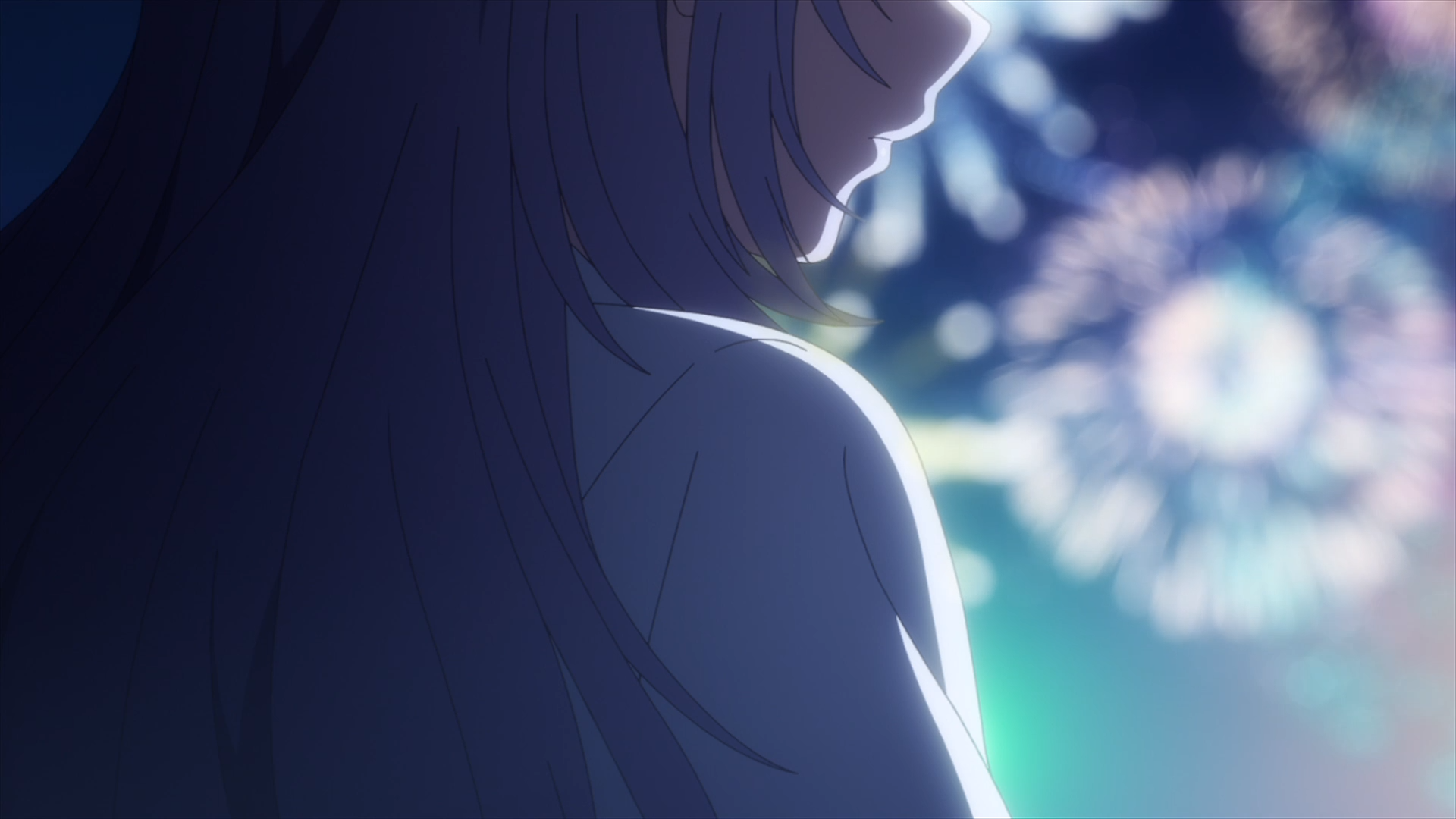
After their work on the gorgeous film Maquia: When the Promised Flower Blooms, PA Works has somehow managed to extend the production value from that movie into their latest series, Iroduku. Sporting beautiful background art and vivid coloring work, this world is brought to life in vibrant fashion. However, this intricate art isn’t just for aesthetic value, it also ties into the core plight of the series’ heroine, Hitomi Tsukihiro. Hitomi is member of a family of mages, a clan whose impressive magical ability has led to the loss of their ability to see color. Our protagonist’s inability to perceive the beauty of the world around her defines her central dilemma, and is made all the more painful due to how achingly pretty this depiction of Japan is. In addition it also works as a great metaphor for Hitomi’s sense of malaise and depression, the absence of color from her life leading to a hatred of magic and a desire for change.
Her grandma then offers her an outlet for that change, and somewhat against her will, Hitomi is sent sixty years into the past for reasons her grandmother refused to disclose. While so far the pacing has been relatively slow, and the heroine’s muted presence will undoubtedly be outputting to some, the premiere did a great job of capturing Hitomi’s disconnect from the world around her. The use of black and white shots to present the world from her point of view were effective, although they were overused slightly. All things considered, Iroduku‘s first episode is worth seeing, both because of its communication of its protagonist’s despair, and because of its stunning background art.
Rating: B
JoJo’s Bizarre Adventure Part 5: The Golden Wind
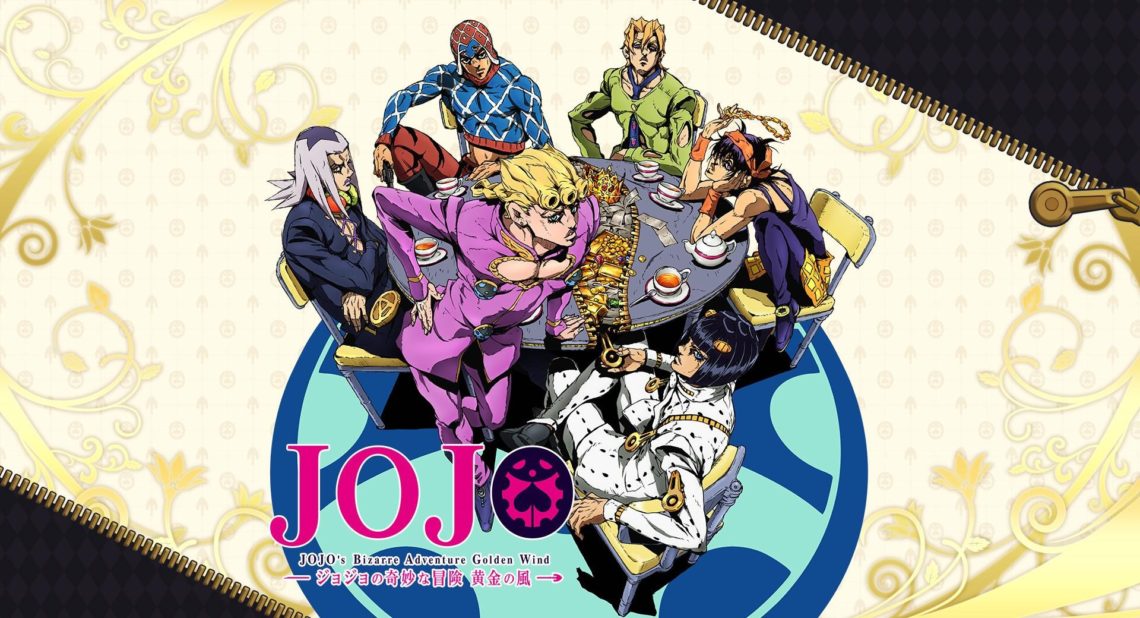
There’s really nothing else quite like JoJo. Despite the fact that each of its arcs essentially tackles a different genre while presenting a new cast of characters, mangaka Hirohiko Araki’s brand of absurdity, striking art, and clever bombast persist across the time jumps and different settings. While his characters are never particularly deep, they are always distinctive, either in their menace, amorality, or likability. The latest of David Production’s adaptation captures all of this, delivering the intricate character art, glorious one liners, and strategy driven Stand battles that JoJo fans have become accustomed to.
The first episode of Golden Wind mostly serves to introduce us to the setting and some of the new characters. This depiction of Naples juxtaposes it’s natural beauty against its seedy underbelly, a comparison that also reflects on the protagonist, Giorno Giovanna. Despite his charm, he is a seasoned criminal and a clear product of his environment. However Giorno’s thievery is contrasted against Leaky-Eye Luca, a figure whose murderous tendencies dwarf the crimes of our protagonist. An altercation between the two seems to be what will drive the plot, but there are also clear character tie-ins to the previous arc, Diamonds are Unbreakable. Between a completely ridiculous scene that includes licking the introduction of a new seemingly malicious weirdo, and the interesting new Stand concepts, it is abundantly clear that JoJo is back and as fun as ever.
Rating: B
Thunderbolt Fantasy: Season 2
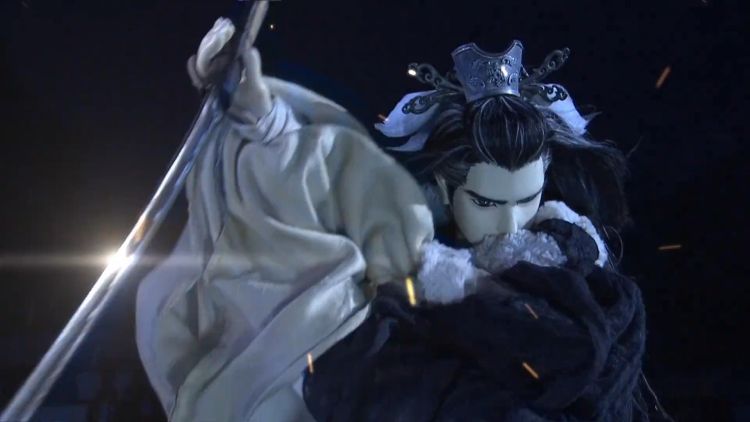
However, JoJo isn’t the only absurdist action series that is further extending its run. Urobuchi and Pili’s glove puppet Wuxia hamfest, Thunderbolt Fantasy is also thankfully returning with its second season. While I recently covered why you should watch this outrageous production, to summarize the show combines one of the anime industry’s most entertaining screenwriters with the resources of a seasoned Taiwanese puppet animation studio to result in a ridiculous and effortlessly cool action spectacle. The end product is entirely unique, and a continuation of the several hundred year old Chinese art-form of using glove puppetry to tell stories. The fight sequences take full advantage of the medium, creating a physicality that traditional animation lacks, fully delivering on the premise of its martial arts antics. Its also filled to the brim with wonderfully executed self-indulgent cheese. The one liners are sharp, the character names are iconic, and the twists come fast and frequently.
Unfortunately Season 2’s premiere doesn’t match the first season’s introductory cold-open, a sequence that was strong enough to sell the entire appeal of the show; from its acrobatic duels, strong visuals, and super-villains who menacingly descend from the heavens while uttering poetry. The first episode of the second season begins with a great deal of exposition, filling in some of the gaps between the previous season and this one, while also setting up the future conflict. Thankfully when the first duel breaks out, it becomes immediately clear that the same degree of polish and exciting action choreography are on display. While the setup for this season doesn’t quite feel as essential as the setup for the last, and the lack of a ensemble of new protagonists is somewhat disappointing, I’m more than willing to give this show the benefit of the doubt. It seems that this season has high profile hot-blooded action series in spades.
Rating: B-
Bloom Into You
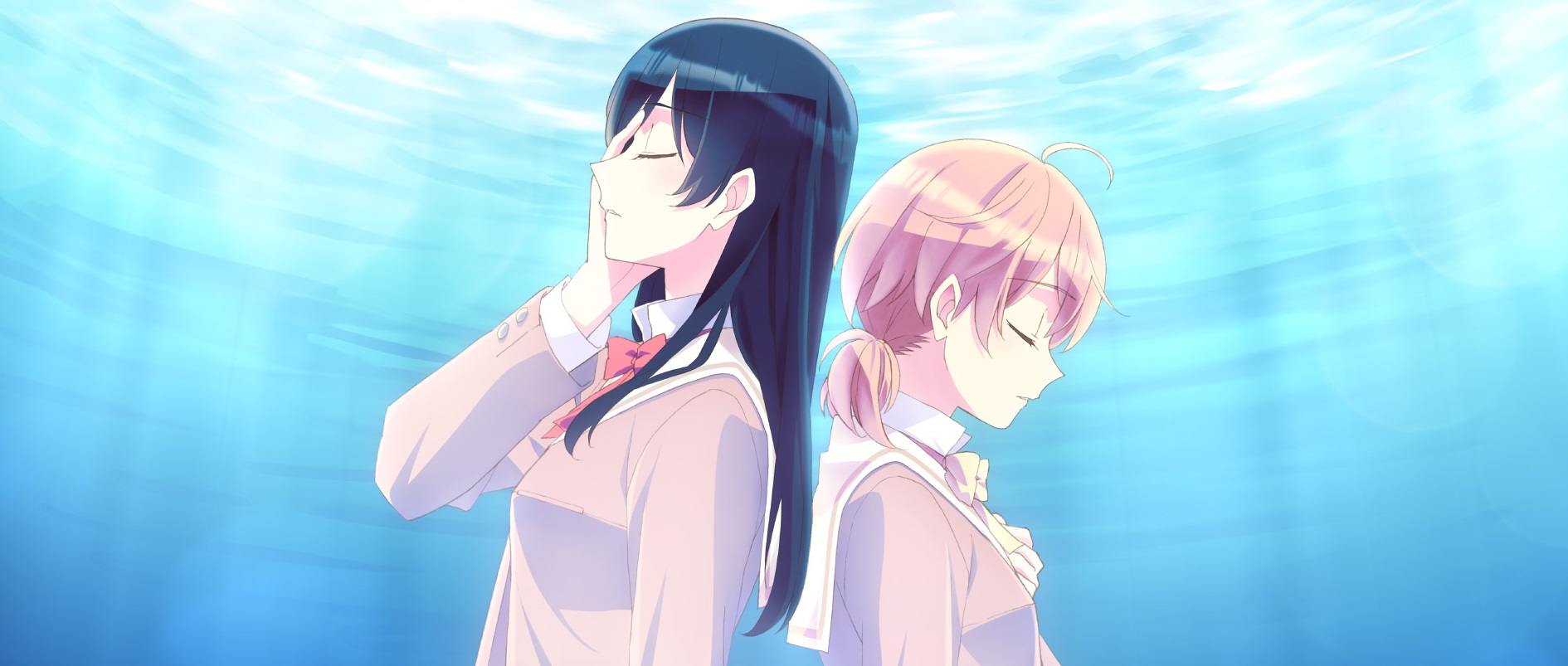
LGBQT representation in anime is something of a mixed bag. Although there are a great deal of Yuri and BL properties, the majority of them are exploitative affairs, clearly aimed at people’s kinks as opposed to an empathetic representation of gay romance. Luckily, Bloom Into You keeps trashy inclinations to a minimum, instead focusing on Yuu Koito’s inability to feel any sort of romantic longing. A high school freshman, Yuu finds herself constantly on the sidelines of romantic relationships, finding it impossible to become interested in anyone else. Eventually, she meets another student who expresses the same sentiment, a senior named Touko Nanami. However, it isn’t long until Nanami realizes that she has finally met the right person in Yuu, and she promptly confesses her feelings.
If anything, its this plot point that feels the most out of place, the natural rapport between the two giving way to this sudden courtship seeming rushed. However, despite her new friend’s confession Yuu’s apparent asexuality and disappointment towards romance persists. Its the representation of Yuu’s longing to feel love that is most deftly expressed in the premiere, frequent shots of her loneliness delivering on this conceit. While Bloom Into You‘s pacing is a bit lackadaisical, its confident articulation of its protagonist’s feelings, and its lack of outright exploitative material make it a promising romance.
Rating: B-
And that wraps up my clear-cut recommendations. While there’s a few more shows that I haven’t checked out yet, the sheer volume of series will probably limit my watching schedule to those previously mentioned. And impressively, there seems to be even more around the corner. While Attack on Titan Season 3 unfortunately seems to have been delayed, there is a new Kyoto Animation show on the way, as well as the continuation of the acclaimed Monogatari series. Between hammy action shows and quieter character studies, this seasons got a lot to love. Right now, the anime is quite good.






